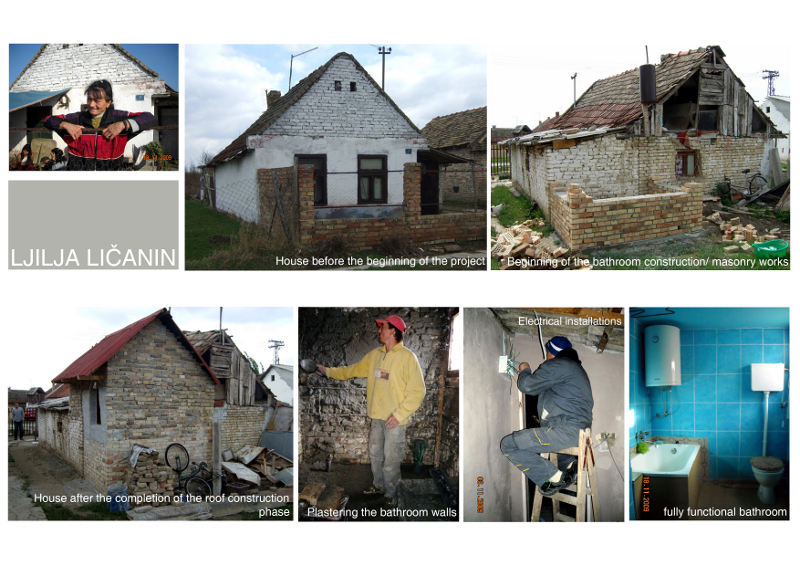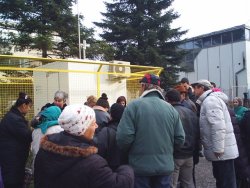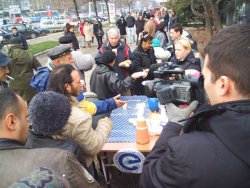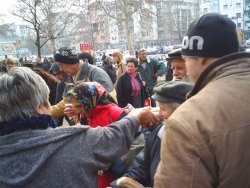 A hand up for Serbia’s Roma People
A hand up for Serbia’s Roma People
Voivodina, the northern province of modern-day Serbia, was always considered the most culturally mixed area of the former Yugoslavia, the state which lasted from the Versailles Treaty of 1919 to the outbreak of civil war in 1991. But the origins of the people of Voivodina lie further back in history. During the time of the Empress Maria Theresa the richly fertile plain between two great rivers, the Danube and Tisza, drew in pioneering settler farmers from the neighbouring countries: Hungarians, Romanians and Germans as well as Serbs. They established settlements which can still today be recognised in the style of their village architecture, in particular their churches. During the late nineteenth century, which was a period of Hungarian hegemony, much of the land was drained in order to exploit its agricultural potential even further. Many of the German communities disintegrated in 1945 when they were expelled on the orders of the new regime of Marshal Tito. There are also small but significant numbers of Slovaks, Ukrainians, Ruthenians, Croats and Montenegrins. Until 1944 there was also a Jewish community in Novi Sad, where their impressive red-brick synagogue still stands. Voivodina has always been cited as an example of an area where peaceful co-existence was the reality of daily life rather than an aspiration.
Voivodina is also home to another significant minority: the Roma people. During their long journey from the Punjab and Rajasthan regions of India, which started in the 11th century, the Roma moved through the Caucasus and Asia Minor before arriving in the Balkans. As a result, the Roma population in the modern countries of south-east Europe has always been considerably higher than in western Europe.
However, there is one significant difference between the Roma and the other minorities of Voivodina, which is that they have been systematically discriminated against and rejected as outsiders, in particular during World War II. There is no doubt that the Roma continue to be among the poorest and most disadvantaged people in Europe. Their generally poor living conditions and lack of access to health care mean that relatively few live to reach old age, and in terms of formal education few ever progress beyond primary school. In the language of social analysis, the indicators are very low. These factors also weigh heavily against the Roma in the jobs market where their lack of formal training in skills and education and the severe economic situation in Serbia at the moment are severe obstacles to progress. In Novi Sad, Roma men and boys can often be seen with their horse and carts collecting cardboard or any discarded items for re-cycling or re-sale.
The traditional Romany lifestyle has always been enshrined in Roma culture and families had roamed over wide areas with their horse-drawn caravans throughout their history. However, during the 1970s, the Belgrade government introduced a new policy of compulsory settlement towards the Roma. But as the Roma people owned no housing stock of their own, they were encouraged – indeed prevailed upon – to settle in disused buildings such as light industrial units or former workers’ quarters located on the edge of towns, where so-called Roma settlements began to appear. One such settlement near Novi Sad was set up in the temporary shelters of an agricultural company. This is the place now known locally as “Bangladesh”.
In recognition of the special needs of the Roma, the EU introduced its own “Decade of Roma Inclusion” from 2005 to 2015 which aims to influence policy and actions at a strategic level. But at grassroots level there is an organisation in Novi Sad which has been working for a number of years alongside the locally domiciled Roma people: the Ecumenical Humanitarian Organisation (EHO) which is the social arm of five of the local minority churches (protestant, reformed and Greek Catholic). EHO has worked with the Roma for more than 15 years, and the organisation’s approach to the sustainable renewal of Roma settlements was first tested in the “Bangladesh” settlement and shown to be a great success. This model is also being used in the village of Đurđevo, in Žabalj municipality, where there is another Roma settlement known as “Ciganski Kraj” (gypsy neighbourhood) where EHO is working in active partnership with the Roma community. The houses here are small, having been built by the owners themselves using recycled bricks and other materials which they managed to forage from demolition sites in the surrounding area. Almost without exception, the houses had no bathroom or water supply. The community identified improved water and sanitation as their most urgent social need and EHO was asked to assist. Their response came in three stages: first, a process of consultation with the community and an assessment of the needs including the capacity of the people to undertake the necessary building work themselves; secondly the funds had to be raised from EHO’s donors in Switzerland; thirdly the project had to be implemented during 2009 before the cold winter weather arrived in November. For a set price of €1,500 per house, each family received the materials to build a small bathroom extension to their house including the tiles and interior fittings and plumbing, as well as any extra skills training needed. A true example of a self-help project which responds to the expressed needs of the people.
Robert Bu is EHO’s Roma Programme Manager. “At the moment we are the only grassroots organisation in Voivodina with the capacity to run a social inclusion and housing project. It’s a challenge and a great responsibility, but we are achieving something very important here”. Robert sees the participation of the Roma people in all phases of the project as the main difference between this project and other regional programmes. The people build on their own capacities and resources and thus contribute to the development of the local community. “This model does not impose ready-made solutions. Individual planning increases the feeling of ownership of the process and allows the target group to take its own decisions”.
Zlatko Marjanov and his wife are participating in the housing project in the Ciganski Kraj settlement near Đurđevo village. “I am very pleased with the dweller-driven approach because I gained some new construction skills so I might apply them elsewhere” said Zlatko. His wife agreed, adding that without the financial support, they would never have been able to invest in a new bathroom themselves.
Rehabilitating homes and providing water and sanitation is only a part of EHO’s programme of support for the Roma. The range of EHO’s Roma programme has included at various times education, primary health care, vocational training, legal advice and help in finding employment. Through its long-term engagement with the Roma community in Voivodina, EHO is making a real difference to lives of some of the poorest people in Europe. As Anne Frank wrote: “How wonderful it is that nobody need wait a single moment before starting to improve the world”.
author: Antony Mahony, a visitor from London













 A hand up for Serbia’s Roma People
A hand up for Serbia’s Roma People



